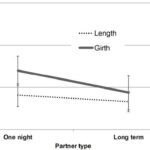A box plot, also known as a box-and-whisker plot, visually represents the five-number summary of a dataset: minimum, first quartile (Q1), median (Q2), third quartile (Q3), and maximum. This powerful tool helps understand data distribution and identify outliers. This tutorial provides a step-by-step guide on how to create comparative box plots in Excel for insightful data comparison.
Creating Side-by-Side Box Plots in Excel
Comparative box plots, displayed side-by-side, facilitate easy visual comparison of multiple datasets. Here’s how to create them in Excel:
1. Data Entry
Begin by entering your data into Excel. Organize each dataset into a separate column, as shown in the image above. This clear structure ensures accurate plot generation.
2. Chart Creation
- Select Data: Highlight all the data cells, including the column headers.
- Insert Chart: Navigate to the “Insert” tab and click “Recommended Charts.”
- Choose Box & Whisker: In the “All Charts” tab, select “Box & Whisker” and click “OK.” Excel will automatically generate side-by-side box plots representing your datasets.
3. Customization
- Remove Gridlines: Click on the gridlines in the chart background and press “Delete” for a cleaner look.
- Add Legend: Click the green “+” sign in the top right corner of the chart, check the “Legend” box, and choose “Bottom” for its position. This clarifies which box plot corresponds to each dataset.
- Color Modification: Click on individual box plots to change their colors for better visual distinction.
Interpreting Comparative Box Plots
The resulting side-by-side box plots provide valuable insights:
- Variance: The length of the box represents the interquartile range (IQR), indicating data spread. Longer boxes signify higher variance.
- Median: The horizontal line within the box represents the median (the middle value). Comparing median positions across box plots reveals central tendency differences between datasets.
- Outliers: Points plotted outside the whiskers are potential outliers, indicating unusual values within the dataset.
Conclusion
Comparative box plots in Excel offer a powerful way to visualize and compare the distribution of multiple datasets. By following these steps, you can easily generate and customize these plots to gain valuable insights from your data. Understanding variance, median differences, and potential outliers allows for informed decision-making based on data trends and patterns.
